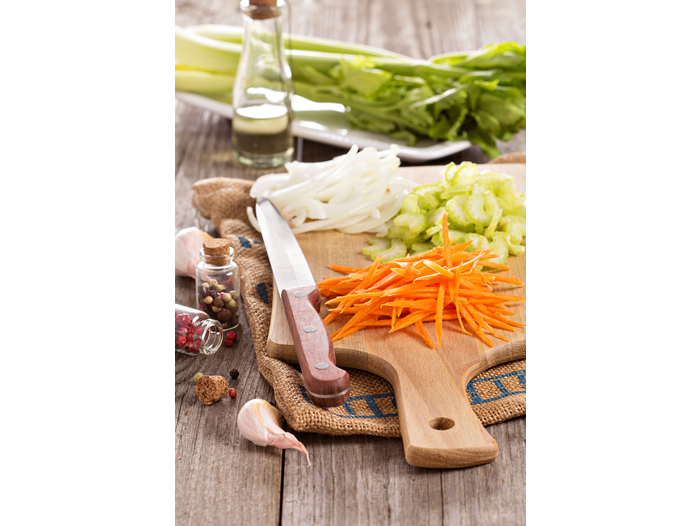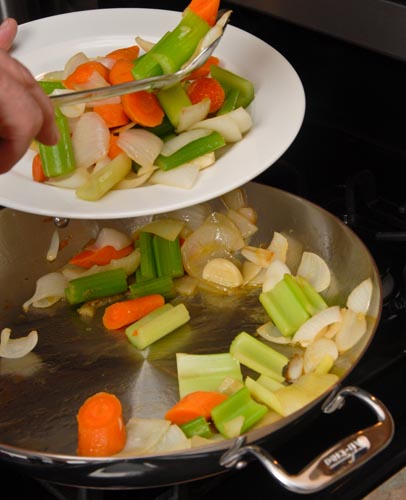In cultures around the world, cooked dishes have a very common element that links them in a very significant way: a foundation of aromatics— a blend of vegetables that contribute aroma, depth of flavor, nuance, and richness.
Probably the most prominent of these in American cuisine is borrowed from the French: mirepoix, a combination of diced vegetables of 2 parts onion to 1 part each of celery and carrots.

Cutting and Cooking with Mirepoix
Soup stocks that require long, low-heat cooking times require large-cut mirepoix, stews and braises begin with medium dice, while soups employ small dice. Sauces require fine dice sautéed in butter to which herbs and seasonings are added to form the specific flavor profile of the dish. The rule of thumb here is: The longer the cooking time, the large the cut of mirepoix.
Here, from the International Culinary Center, is a short video on preparing mirepoix, depending on the type of dish being cooked.
The Culinary Institute of America created this video on how to cook with mirepoix.
This recipe for Beef Stock is a fundamental example of the role of mirepoix.
And here is a step-by-step photo tutorial on “How to Braise,” beginning with the mirepoix preparation.
Variations on a Theme
The primary variation on this trio is “white” mirepoix, which substitutes the white part of leeks for the carrot. In an extended variation, parsnips add a fourth element to the aromatic foundation. This style of mirepoix is used most often in light-colored dishes.
In Cajun-Creole cuisine, the “holy trinity” are the flavor building-blocks that are another variation of the classic mirepoix: 2 parts onion to 1 part each of celery and green bell pepper.
Aromatic trinities can be found in various other cuisines from around the globe, including:
- Chinese (Cantonese): Scallions, Ginger, and Garlic
- Chinese (Szechuan): Garlic, Ginger, and Chile Peppers
- Indian: Onion, Garlic, and Ginger
- Lebanese: Garlic, Lemon Juice, and Olive Oil
- Spanish Sofrito: Onion, Tomato, and Garlic cooked in Olive Oil
- Thai: Galangal, Kaffir Lime, and Lemon Grass
What dishes to you prepare that use mirepoix or one of the trinity variations? What type of additional flavorings do you add to your aromatic foundation?



Leave Your Response